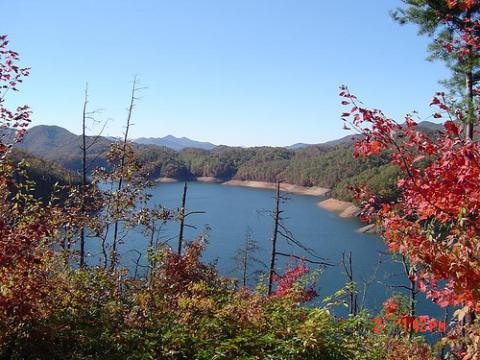More than six decades after promising to build a road along the north shore of Fontana Lake in Great Smoky Mountains National Park, the National Park Service has signed off on a deal to settle the matter with a cash payout of $52 million. Today's action brings an end to the long saga of the so-called "road to nowhere."
When Fontana Dam was created in 1943, not only did it become the tallest dam east of the Rocky Mountains, at 480 feet, but it forced many families to move, leaving behind family cemeteries. For years park officials have ferried all who were interested across the lake in the spring so they could visit those cemeteries for "decoration days."
For six decades federal officials promised to build a dead-end road along the north shore of Fontana Lake so the families could more easily reach the cemeteries. And for six decades no firm decision was reached.
The road was expected to cost nearly $600 million and take about 15 years to build. Conservation groups argued it would have cut through the "largest unbroken tract of mountain forest on federal land in the East, on the North Carolina side of the park, leaving a gash on the landscape that would be visible for miles." Additionally, they claimed the road would bisect the Appalachian National Scenic Trail, destroy 28 miles of the Benton MacKaye Trail, and threaten 140 mountain streams.
Opposition to the road was also voiced by the Swain County Commission, North Carolina's governor, and other civic leaders in the area. All favored the monetary settlement. About the only one in favor of building the road was former U.S. Rep. Charles Taylor, R-North Carolina.
Paul Anderson, acting director of the Park Service's Southeast Region, today signed the Record of Decision that officially calls for the monetary settlement to Swain County, North Carolina.
That clears the way for a new agreement to be crafted between the Interior Department and the other three parties to the 1943 agreement that called for construction of the North Shore Road as a replacement for an earlier road that was flooded by the lake during World War II
"We anticipate scheduling a meeting early in the new year between a representative of the Secretary Interior and representatives of the Swain County Commission, North Carolina Governor Easley, and the Tennessee Valley Authority to develop a new document that will replace the 1943 Agreement, said Great Smoky Superintendent Dale Ditmanson. "In anticipation of negotiations towards a new agreement and a monetary settlement, Representative Heath Shuler and Senator Lamar Alexander were successful in including $6 million in the 2008 DOI budget, which was signed on December 26, to be available as an initial payment to Swain County.”




Comments
Better late than never?
Thank god this area will be perserved for future generations. This road would have been very foolish.